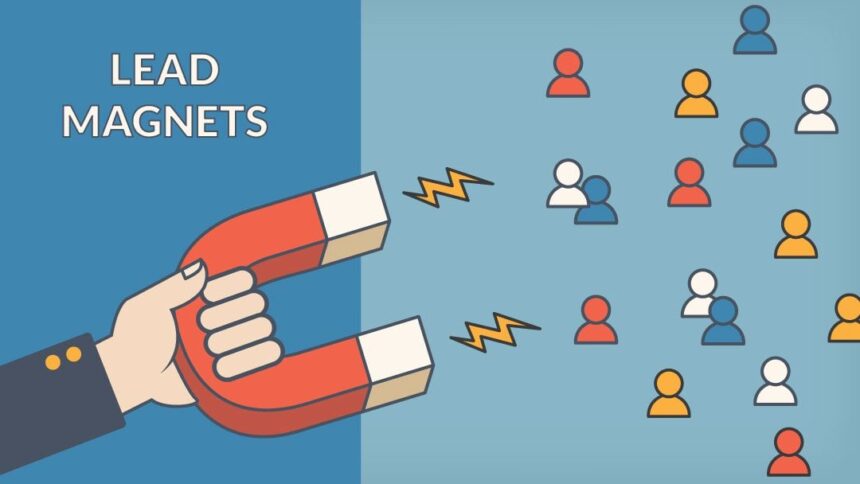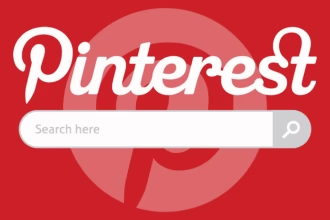How to Create a Lead Magnet That Actually Gets Emails (Step-by-Step Guide)
A lead magnet is your secret weapon for building an email list that drives conversions. But not all lead magnets are created equal—only those that deliver real value and resonate with your audience will get those coveted email sign-ups. So, how do you craft a lead magnet that actually gets emails and converts visitors into subscribers? In this step-by-step guide, we’ll walk you through creating a lead magnet that attracts subscribers like a magnet in 2025. Let’s get started!
- How to Create a Lead Magnet That Actually Gets Emails (Step-by-Step Guide)
- Step 8: Track and Optimize Performance
- Bonus Tips for Lead Magnet Success
- Final Thoughts
What Is a Lead Magnet?
A lead magnet is a free, valuable resource offered to your audience in exchange for their email address. Think ebooks, checklists, templates, webinars, or quizzes. The key? It must solve a specific problem for your target audience while being quick to consume and easy to access.
Step 1: Understand Your Audience’s Pain Points
To create a lead magnet that converts, you need to know exactly what your audience struggles with. Your lead magnet should solve a specific problem or fulfill a desire. Narrowing down the focus increases the likelihood of email signups
- Research Your Audience: Use tools like Google Forms or SurveyMonkey to ask your audience about their challenges. Check forums like Reddit or Quora, or analyze comments on your blog or social media posts on platforms like X to identify common pain points.
- Define a Specific Problem: Focus on one clear, urgent issue. For example, if your audience is small business owners, a pain point might be “how to generate leads on a tight budget.”
- Example: A fitness coach might discover their audience struggles with “sticking to a workout routine.” A lead magnet like “7-Day Beginner Workout Plan” directly addresses this.
Pro Tip: Use Google Analytics or social media insights to identify your audience’s demographics and interests for better targeting.
Step 2: Choose the Right Lead Magnet Type
Select a format that aligns with your audience’s preferences and your niche. Here are popular options:
- Checklist or Cheat Sheet: Quick, actionable lists (e.g., “SEO Checklist for Bloggers”).
- Ebook or Guide: In-depth content for complex topics (e.g., “Ultimate Guide to Social Media Marketing”).
- Template: Ready-to-use resources (e.g., “Email Marketing Swipe File”).
- Webinar or Video Training: Interactive and engaging (e.g., “Free Webinar: Double Your Website Traffic”).
- Quiz: Fun and personalized (e.g., “What’s Your Marketing Personality?”).
Key: Keep it simple and consumable. A 5-page checklist often outperforms a 50-page ebook because it’s faster to use.
Step 3: Craft a Compelling Lead Magnet
Your lead magnet must deliver value and look professional. Here’s how to create it:
- Solve the Problem: Ensure your lead magnet provides a clear, actionable solution. For example, a “Budget Planner Template” should include easy-to-follow fields and instructions.
- Keep It Focused: Address one specific issue to avoid overwhelming your audience. A lead magnet titled “10 Proven Instagram Hacks for 2025” is better than a vague “Social Media Guide.”
- Design It Well: Use tools like Canva or Adobe Express to create visually appealing PDFs or graphics. Stick to your brand colors and fonts for consistency.
- Add a Strong Call-to-Action (CTA): Include a CTA within the lead magnet, like “Join our newsletter for more tips!” to encourage further engagement.
Example: A digital marketer might create a “Content Calendar Template” with a 30-day plan, clear instructions, and a link to a paid course for advanced strategies.
Step 4: Write an Irresistible Title
Your lead magnet’s title is the hook that grabs attention. Make it specific, benefit-driven, and urgent.
- Use Power Words: Words like “ultimate,” “proven,” or “free” boost appeal (e.g., “Free SEO Checklist to Rank #1 in 2025”).
- Be Clear: Avoid vague titles. “5 Steps to Double Your Email List” is better than “Email Marketing Tips.”
- Test Variations: Try A/B testing titles on landing pages to see which drives more sign-ups.
Step 5: Build a High-Converting Landing Page
Your landing page is where visitors decide to opt in. Make it simple and persuasive:
- Headline: Match your lead magnet’s title or make it benefit-focused (e.g., “Get Your Free SEO Checklist to Skyrocket Your Rankings!”).
- Subheadline: Explain the value in 1–2 sentences (e.g., “This 5-minute checklist will help you optimize your website for Google in 2025.”).
- Visuals: Include a mockup of your lead magnet (use tools like Placeit) to make it tangible.
- Form: Ask only for essential fields (e.g., name and email) to reduce friction. Use tools like Mailchimp or ConvertKit for easy form integration.
- CTA Button: Use action-oriented text like “Download Now” or “Get Your Free Guide.”
- Social Proof: Add testimonials or stats (e.g., “Join 10,000+ marketers who’ve used this guide!”) to build trust.
Pro Tip: Use a clean, distraction-free design with tools like Leadpages or ClickFunnels for higher conversions.
Step 6: Set Up Email Delivery
Once someone signs up, deliver the lead magnet seamlessly:
- Use an Email Marketing Tool: Platforms like Mailchimp, ConvertKit, or ActiveCampaign automate delivery. Set up a welcome email with a download link or attachment.
- Test Delivery: Ensure the link works and the file is accessible on all devices (PDFs are universal).
- Follow-Up Sequence: Create a 3–5 email sequence to nurture new subscribers, offering more value and promoting your products or services.
Step 7: Promote Your Lead Magnet
Drive traffic to your landing page to maximize sign-ups:
- Social Media: Share your lead magnet on platforms like X, LinkedIn, or Instagram with a direct link to your landing page.
- Blog Posts: Embed opt-in forms in relevant blog posts (e.g., a post about SEO could promote your “SEO Checklist”).
- YouTube or TikTok: Create short videos explaining the value of your lead magnet and include a link in the description.
- Paid Ads: Run targeted ads on Google or Facebook to reach your ideal audience. Start with a small budget ($5–10/day) and test ad copy.
Related Article:
Step 8: Track and Optimize Performance
Monitor your lead magnet’s success and refine it:
- Track Metrics: Use Google Analytics or your email platform to measure sign-up rates, landing page conversions, and email open rates.
- A/B Test: Experiment with different headlines, CTAs, or designs to improve conversions.
- Update Regularly: Refresh your lead magnet every 6–12 months to keep it relevant (e.g., “2026 SEO Checklist”).
Bonus Tips for Lead Magnet Success
- Offer Instant Value: Ensure your lead magnet delivers a quick win (e.g., a 5-minute video or a 1-page checklist).
- Align with Your Funnel: Your lead magnet should naturally lead to your paid products or services. For example, a “Free Workout Plan” can upsell a fitness coaching program.
- Avoid Over-Promising: Deliver what you promise to build trust and avoid high unsubscribe rates.
Final Thoughts
Creating a lead magnet that actually gets emails requires understanding your audience, delivering real value, and optimizing every step of the process. By following this step-by-step guide, you can build a lead magnet that attracts subscribers and grows your email list in 2025. Start today, test your results, and watch your audience grow!
By following these steps—researching your audience, choosing the right format, creating high-quality content, optimizing your landing pages, and promoting strategically—you’ll turn visitors into loyal subscribers who are eager to hear from you.
Remember: The most successful lead magnets are those that solve a real problem and build trust with your audience.
Image source: Elegantthemes.com






